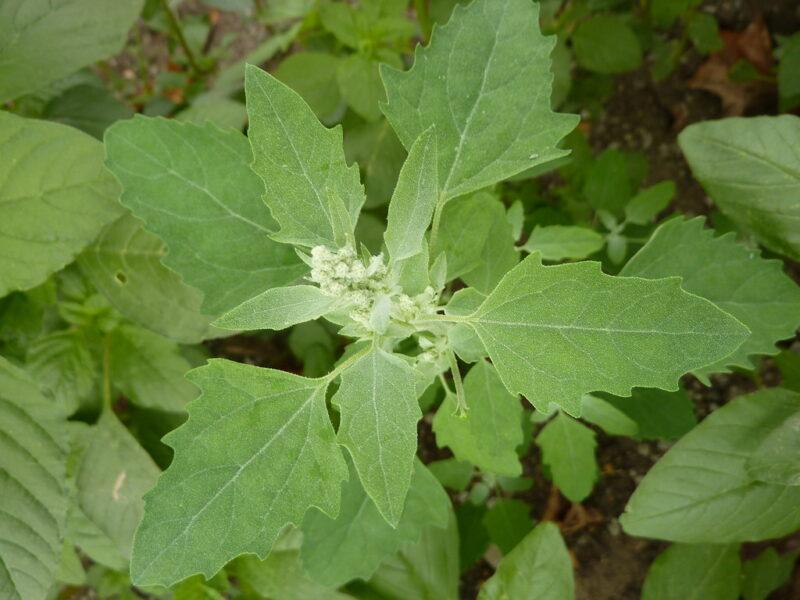Wild Spinach or Lambsquarters
Prolific, abundant, and delicious, the top edible “weed” is lambsquarters. It grows with little effort in almost any disturbed soil and is one of the most nutrient-dense plants ever analyzed. It is rich in potassium and magnesium and has more vitamins A and C, riboflavin, and calcium than domesticated spinach.

Identification: The leaves of the Lambsquarters are arranged in a starburst pattern, and vary in shape from narrow and pointed, to rounded and triangular. They may grow up to four feet tall, though they lose flavor as they age. The waxy coating on the leaves makes water bead and deters insects.
Poisonous look alike: The Hairy Nightshade. The leaves on these two plants are similar, but the nightshade is hairy, while the Wild Spinach are not. They are also easily discernable by their flowers. Hairy nightshade flowers are white, while lambsquarters flowers are green and inconspicuous. Another way to identify lambsquarters is to spray the leaves with water and look for droplets.
Harvesting: Thin the patch by pinching shoots close to the ground and placing the baby shoots in a bowl of water to keep them from drying out. Harvest larger plants by pinching the upper stem. If the stem pinches off easily, it is tender enough to eat. If the stem is old and woody, pluck only the leaves, though pruning the woody stem will stimulate new growth. If the leaves are too old, they may become bitter but are still usable cooked with onion, garlic, or in a stew.
Source: Kallas, John. Edible Wild Plants, Wild Foods from Dirt to Plate. Gibbs Smith Publishing (2010) Print